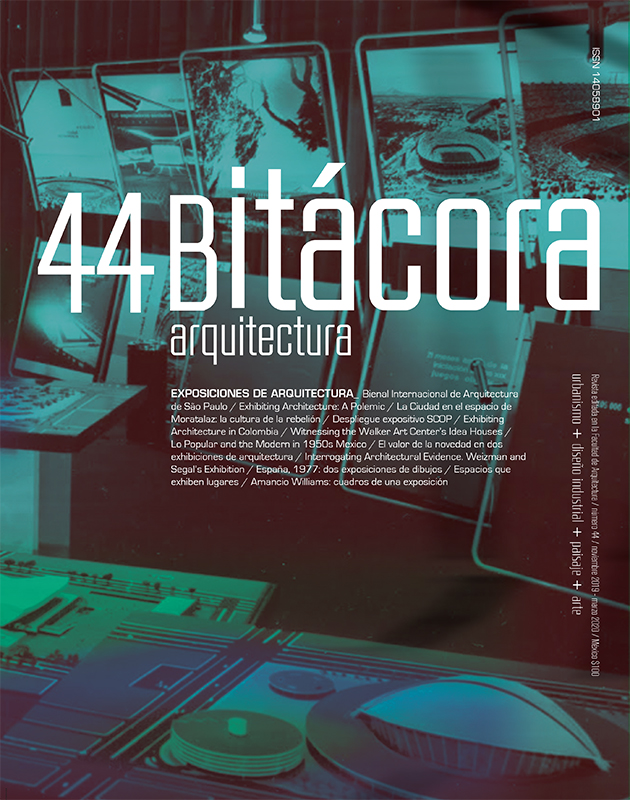La arquitectura se ha convertido en objeto expositivo. Desde principios de este siglo se ha instalado definitivamente en museos de arte, galerías y bienales. No obstante, esta transformación de la arquitectura y su vinculación a los espacios expositivos no es nueva, tiene una larga historia vinculada a la práctica y a la enseñanza de la disciplina. En las primeras décadas del siglo xx, vemos su incorporación en el museo de arte, en sus salas de paredes blancas iluminadas homogéneamente; estos espacios determinantes emergen construyendo una estética y ética expositivas dominantes que modifican y actúan directamente sobre todo lo que se exhibe.
Si la arquitectura ha entrado de lleno en el museo, cabe preguntarnos si se encuentra allí cómoda y a plenitud. Al realizar exposiciones de arquitectura de inmediato aparece la primera dificultad: cómo exponer edificios dentro de otro edificio, cómo reducir la arquitectura al espacio de la galería. Para resolver estas paradojas, inevitablemente se utilizan otros medios que poseen sus propias cualidades, regímenes disciplinarios, técnicos y sociales, así como su propia historia de devenir “objeto de arte.”
El estudio de las exposiciones de arquitectura apenas está comenzando. En estas primeras lecturas es fácil identificar una mirada que simplifica todo y da continuidad a modelos de centro-periferia. Por lo tanto, actualmente se convierte en una tarea fundamental hacer un estudio histórico sobre las exposiciones latinoamericanas desde la región misma y con una mirada que analice con profundidad cada caso, para advertir políticas culturales que actúan en y trascienden los territorios nacionales. Es necesario evitar seguir repitiendo los lugares comunes, como aquél que asegura que las exposiciones del MoMA fueron las únicas trascendentales o el que asegura que Latinoamérica no tuvo exposiciones de arquitectura antes de la Bienal de Venecia.
DOI: https://doi.org/10.22201/fa.14058901p.2020.44
Publicado: 2020-10-07
Núm. 44 (2020): Exposiciones de Arquitectura


